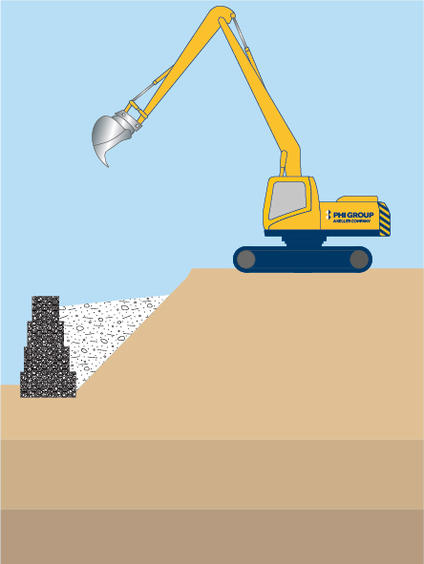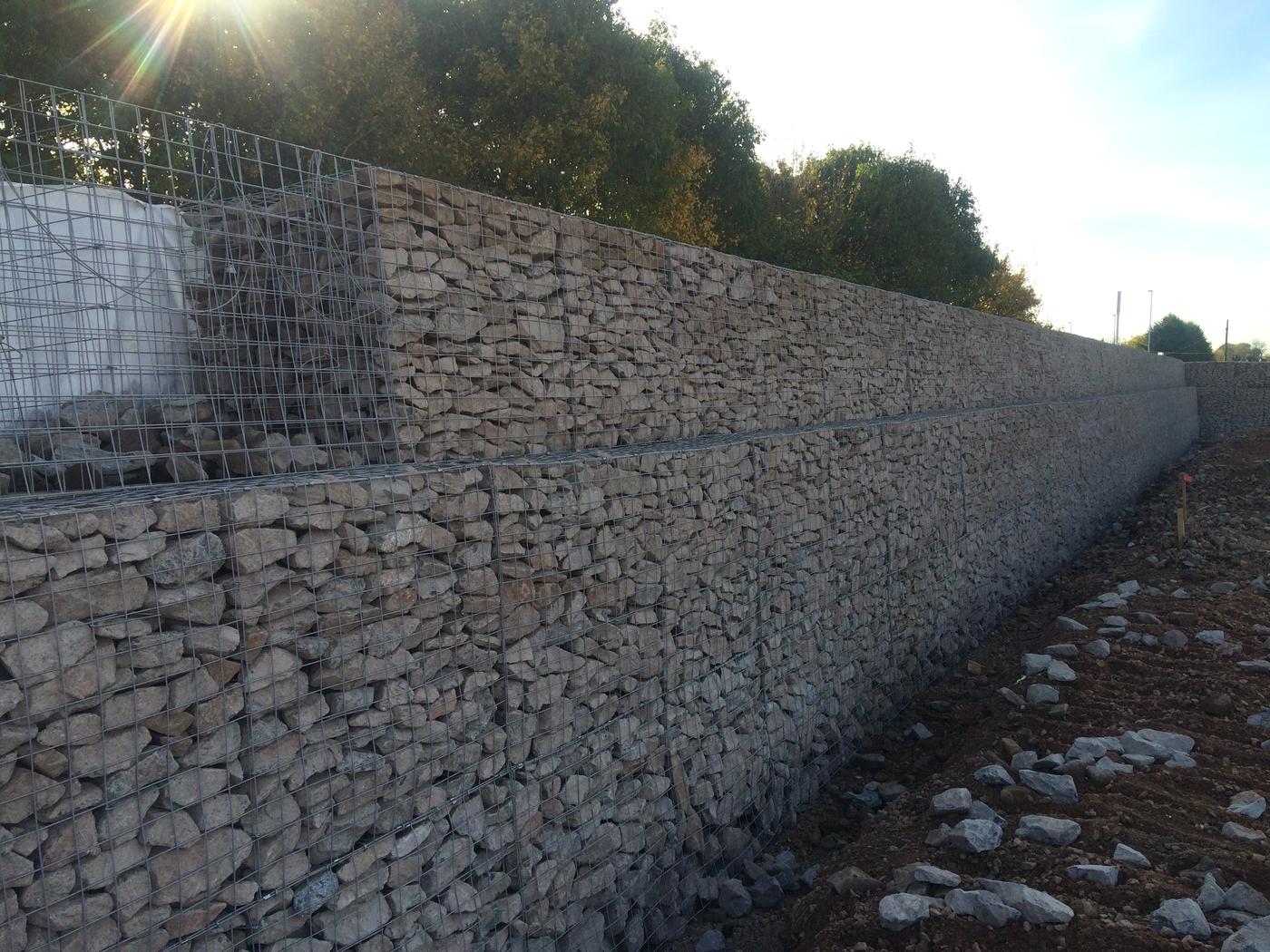Gabions are a very simple gravity retaining wall system using steel mesh cages that are then filled with a large angular stone.

Common uses
Process
The gabions are manufactured from either woven wire, or more commonly a welded mesh steel. The welded mesh gabions offer a more rigid front face to achieve a more uniform finish. Design life can be from 50-120 years depending on the corrosion protection and whether the gabions are pvc coated.
The wire mesh gabion baskets are formed and then placed into position. The majority of the Class 6G gabion stone (150mm-100mm) is machine placed, but the front face can be hand placed to provide an architectural finish. The gabions themselves are relatively inexpensive, but it is the supply of the gabion stone that is the main cost driver.
In certain parts of the country gabion stone is very expensive, so a crib option may be more cost effective. The infill stone for crib walls is less expensive but it is also more dense, so crib structures will tend to be thinner than gabions. It is also a labour intensive and specialised exercise to provide a good finish to the front face.
